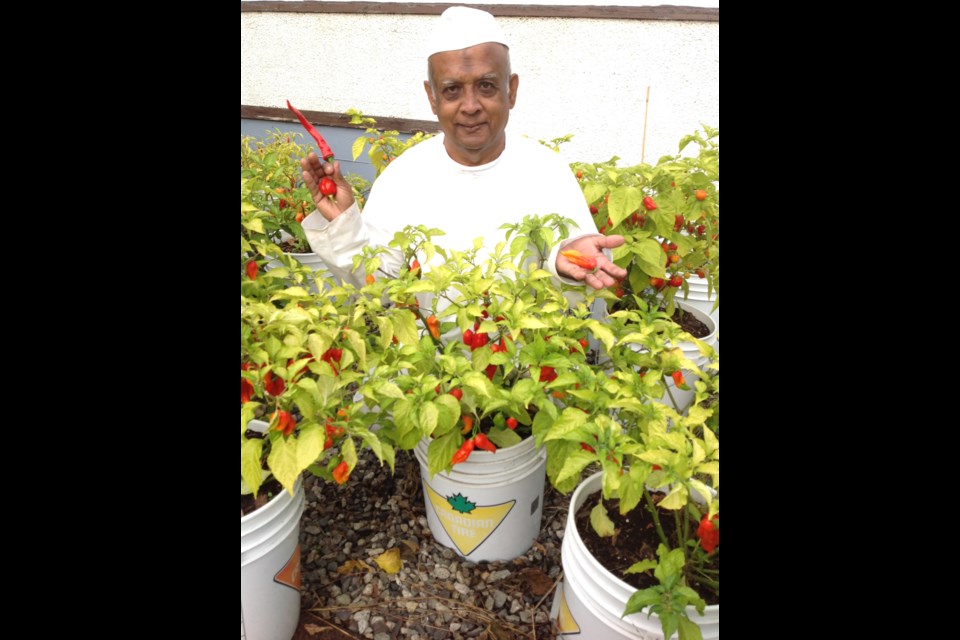If you want to pick a pepper from Ajay Sharma’s garden, you better beware of which one you’re picking.
The West End resident is getting set to harvest a bumper crop of several varieties of chili peppers, including one of the world’s hottest peppers.
“I planted about 50 trees of hot chili peppers. They’ve come up so nice. One of them is Pepper Ghost,” he says. “This is one of the world’s hottest chilies. It is 1.5 million on the Scoville list. I’ve also got Habanero. Habanero is only 200,000 on the Scoville.”
Wilbur Scoville developed the Scoville Heat Scale, which identifies the number of heat units in peppers. While Jalapenos usually rate about 5,000 on the scale, the Trinidad Moruga Scorpion, which has a rating of two million on the Scoville list, is now considered the hottest chili.
“I am from Fiji islands. We eat chilies but not that hot,” Sharma laughs about the Ghost Chili. “It says on the Internet that you cannot cut those chilies with naked hand – you have to have a glove on your hand. You have to be very careful.”
Sharma grows and pickles chilies that he uses throughout the year to add some zing to curries, soups and other meals. This year marked his first foray into growing the Ghost Chili, a warm-climate plant that grows best in full sun.
“I was lucky that this year was very nice weather, very sunny weather. It needs a lot of sun,” he says. “I tried it and it worked. It worked really good.”
People who are unaccustomed to eating hot chilies shouldn’t even think about trying the Ghost Chili (Bhut Jolokia), Sharma says. He notes there would be burning hot consequences if anyone should try to pick a pepper from his garden.
“It would hurt so much,” he says. “It will burn your mouth.”
Sharma, who moved to Canada from Fiji 45 years ago, says people from hot climates are often accustomed to eating spices and have built up a tolerance for hot foods. In addition to using the chilies in his cuisine, he’s also taken some of his pickled chilies to family gatherings, such as weddings.
“I am from Fiji. Our people eat hot food. They eat hot. You put it right on the sign: ‘Watch out, very hot,’” he smiles. “Every tropical country, they eat hot, really, really hot.”
As far as chilies go, Sharma says the Ghost Chili is the hottest he’s had. While he’s be pickling his crop for use throughout the year, he’s already used fresh Ghost Chili in his cooking. Carefully.
“I just used the tip of it, just the tip,” he stresses. “It tastes different too. It gives it a good smell, a good flavour.”
Along with flavouring food, Sharma believes hot chilies also have health benefits.
“They will kill all the bacteria. Chilies are good, garlic is good. They might smell bad but it gives good flavour,” he says. “Chili will burn your mouth a little bit, but we are used to burning our mouths while we are eating our food.”
With little space for a garden, Sharma’s front yard is filled with more than 50 large pails containing Super Chili, Habanero, black pepper and even some mild bell peppers. It’s one of the things that keeps the 73-year-old Hindu minister busy in retirement.
“When you retire, then you do this kind of thing,” smiles Sharma, who was a minister at the Shiv Mandir temple in Burnaby. “It makes your life interesting, you are busy all day.”



